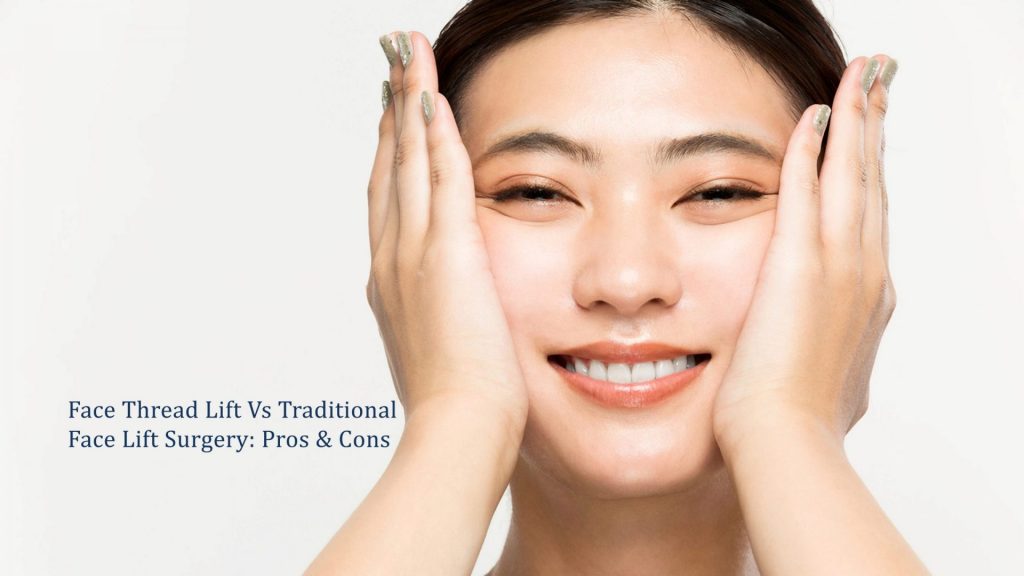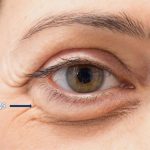Sagging skin, wrinkles, and fine lines are among the common concerns in women as they age. These ageing signs are believed to rip one off their beautiful looks. Fortunately, aesthetic procedures are available today that can help one reclaim their youthful looks. Among the most common options are traditional facelift surgery and the newer face thread lift. Want to know more in detail about these procedures? Let’s find out.
What Is A Face Lift?
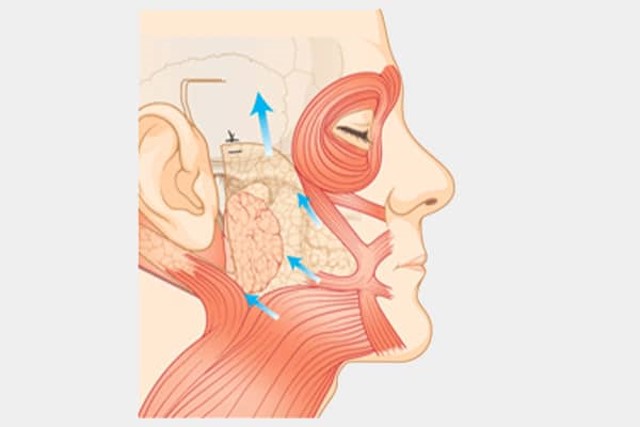
A Facelift is a procedure in cosmetic surgery that is used for tightening and removing sagging skin from the face and the neck areas.
Depending on the needs of the patient, the procedure may be carried out using one of the two common facelift techniques. It could be a traditional or standard facelift – an advanced surgery technique aimed at correcting sagging skin, deep wrinkles, and other facial ageing symptoms. It pulls the skin back gently at the temples, forehead and along the sides of the face to remove sagging skin, leaving behind better-toned skin. Any excess skin is also removed before closing the incision with sutures.
The other technique, referred to as a neck lift, may be needed in some cases to complement the facial rejuvenation results. In this procedure, the surgeon makes an additional incision just below the chin or around the nape for tightening the skin around the neck.
What Is A Thread Lift?
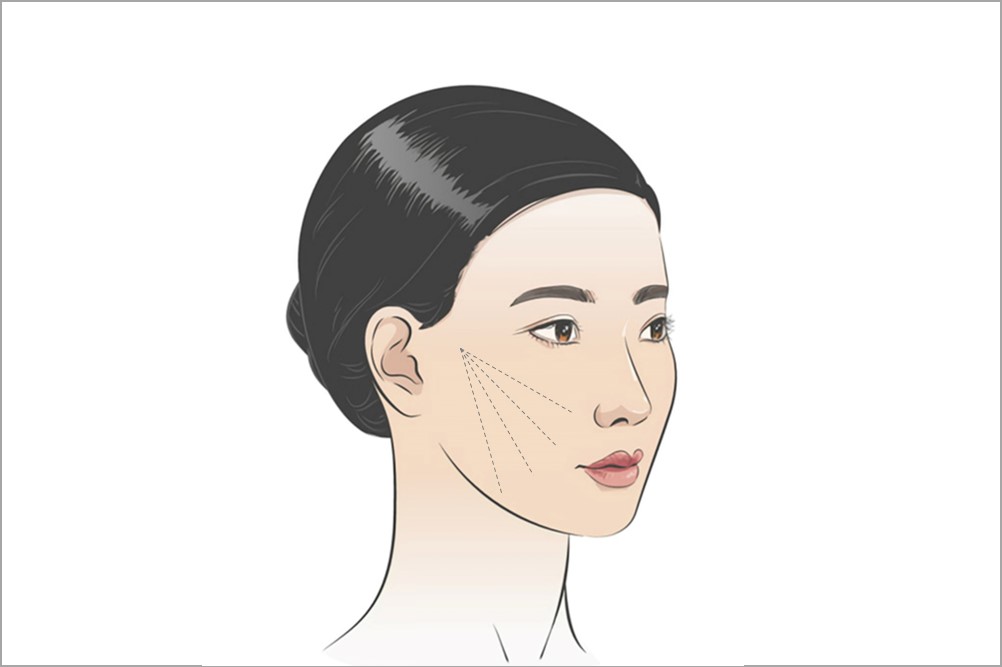
A thread Lift, or Facelift threading, is a minimally invasive facelift procedure. It uses medical-grade threads to achieve the desired lifting effect. These threads work just like dissolvable stitches used commonly in surgical procedures. Depending on the lifting effect desired, the threads can be inserted across the neck, cheeks, and other sites around the face. They are pulled up gently after insertion so that the patients get a firmer and smoother appearance. Some of the threads have micro barbs on them to enhance the thread’s grip on the skin, allowing for tissue repositioning for contour enhancements on top of creating a lifting effect. Made using absorbable materials, these threads are broken down naturally and dissolve into the skin over time.
Pros And Cons Of Facelift VS Thread Lifts
Both the procedures have their pros and cons, and one must consult with their doctor to weigh in on their options. The final decision is often made depending on the individual needs of every patient. Let’s try to do a bit of a comparison between a traditional facelift and a face thread lift.
The Concerns Each Of These Procedures Address And Their Limitations
Facelift surgery is an invasive procedure that can help:
- Remove excess skin and tighten it
- Tighten muscles beneath the skin
- Repositions fat tissues
- Provide a lifting effect to the face
- Reduce wrinkles and deep creases on the face
Even though the surgery is used to produce more dramatic and lasting results, still research says that around 21% of the facelifts start declining after five years or so. Besides, it’s often hard for men to get a proper appearance post-surgery as they have facial hair in front of the ears and when sideburns get pulled back during the procedure, it looks a bit strange.
Deformed earlobes are also a common concern in men and women who undergo facelift surgery. And, to avoid receding facial appearance due to the removal of too much sagging skin, it is important that the procedure is carried out by an experienced surgeon. Additional procedures may also be required to achieve the best results. These can include a neck lift, liposuction, forehead tightening, eyelid surgery, cheek fat removal, and eyebrow tightening among others.
When comes to facelift threading, is a minimally invasive procedure that can:
- Fix deep creases formed due to age
- Address skin issues such as sagging skin and fine lines non-surgically
- Enhance facial contours
- Fix deformities around the mouth and lips
- Lift the neckline
Even though the procedure is less invasive compared to surgical facelifts, it is not for everyone. It can only make minor changes to one’s appearance and doesn’t make any dramatic changes. One may still need to combine other treatments such as fat injection for more ideal rejuvenation results.
How Invasive Are The Two Procedures?
In a surgical facelift, depending on the targeted area for lifting, incisions are made at different parts to carry out the procedure. These incisions may be hidden strategically along the hairline or behind the ear so that they are less visible and can’t be spotted easily after healing.
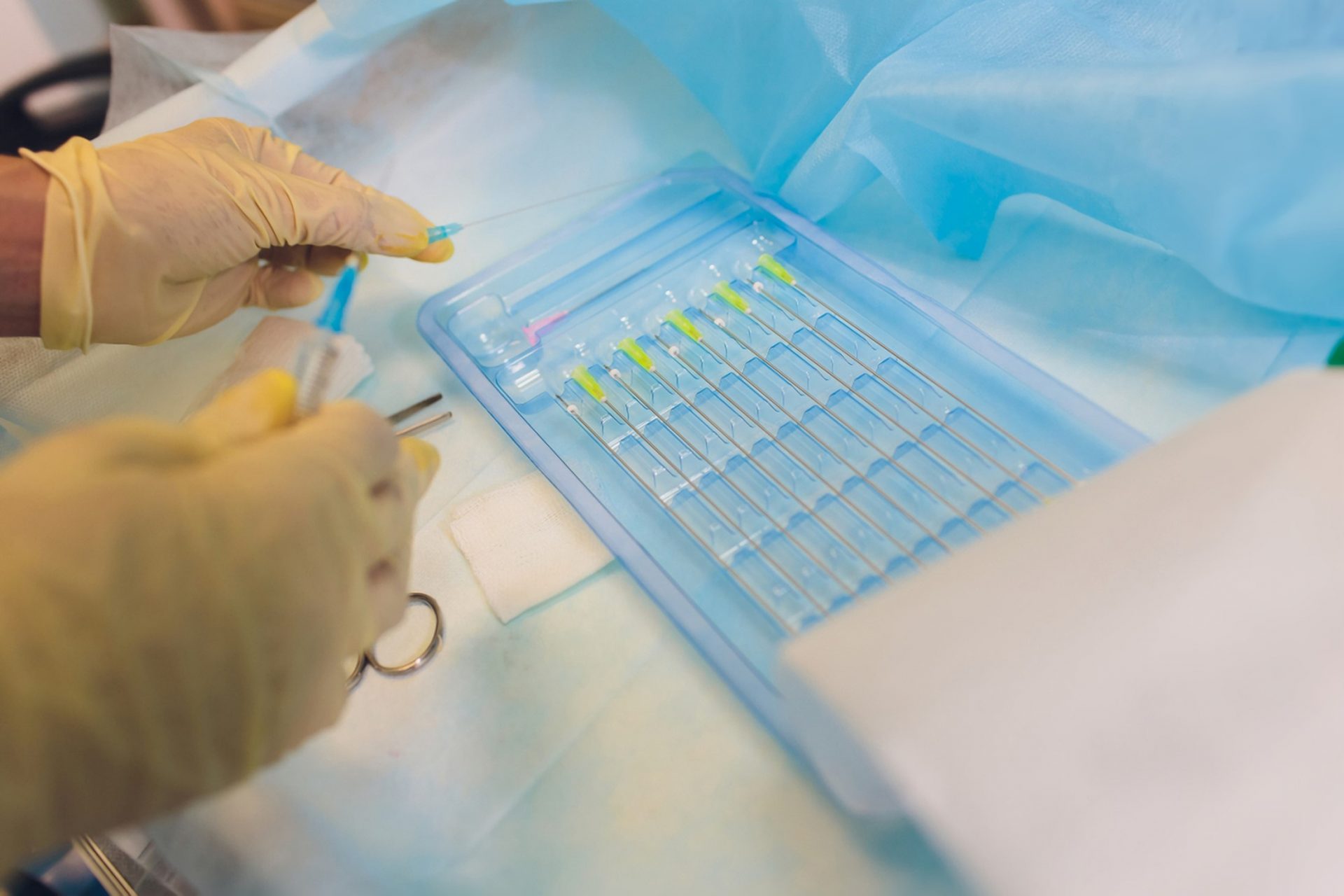
Thread lifts are relatively less invasive and only need small openings, usually the size of needlepoint to insert the threads into the skin. The skin is not surgically lifted, instead, it’s the tension produced by the threads that make the skin look firmer and helps to hold the tissue in place. The incisions aren’t visible and no excess sagging skin is removed during the procedure.
How Long do The Results From Each Procedure Last?
When it comes to addressing facial ageing, a surgical facelift produces results that last the longest among all the solutions available. The results, generally, last for up to 5 years or longer. Seldom do patients choose to undergo a facelift surgery again due to the long recovery duration. However, they can consider minimally invasive or non-invasive procedures for maintenance.
In the case of facelift threading, a number of factors can contribute to the longevity of the results including the thread type used, the number of threads inserted and the skin quality of a patient. The results generally last for anywhere between 6 months to 2 years and can be repeated from time to time to maintain the results.
What Is The Recovery Like?

During surgical facelifts, a heavier dose of anaesthesia is used and the procedure leaves wounds that take some time for healing. So, the recovery takes much longer as compared to facelift threading. Experts often recommend a minimum of 3 weeks for recovery. Some individuals experiencing slower healing will need to factor in more time for recovery.
On the contrary, the thread lift procedure gives instant results and the patients can leave the clinic right after the procedure is over, resuming their routine chores around 7 to 10 days after the procedure.
What Kind of Results To Expect?
Facelift surgery works effectively for individuals with a lot of excesses or loose skin and they are typically anywhere in their 50s or older.
A thread facelift, on the other hand, is more suited to patients with moderate ageing signs. It is usually meant to give a more youthful look and can be considered as an option for those 30 years old and above.
Overall, lifting results can be achieved with both these treatments, but it is important to mention here that results often vary from one individual to another. Hence, it is important to seek an experienced plastic surgeon’s opinion on the possible improvements you can achieve from the treatment before making your decision.
How Much Is The Cost?
With the latest technological advancements, the costs of both these procedures have reduced significantly of late. However, the actual cost may vary depending on the nature of the treatment as well as the surgeon’s level of experience one chooses to get the procedure done. In general, one may have to pay anywhere from $15000-$30000 for surgical facelifts while the facelift threading may cost between $4000-$7000.
Which Procedure Should You Choose?
There are multiple factors to be taken into consideration before deciding on a particular procedure. These include patients’:
- Rejuvenation goals
- Uniqueness in skin physiology
- Age
- Affordability
- Health condition
- Lifestyle
- Consideration for downtime
Both lifting procedures work best for individuals who enjoy good health and have realistic expectations. Candidates with significant and noticeable signs of ageing like extensive sagging, drooping skin underneath the chin, deep creases, and jowls can consider facelift surgery. On the contrary, facelift threading is more suitable for individuals with early ageing signs and who don’t expect any dramatic changes in their appearance. It works best for individuals who are younger or looking at anti-ageing prevention procedures, or those who have started experiencing the onset of skin laxity and facial ageing. It can help them fight the ageing signs before they need a surgical facelift.
Also Read: Non-Surgical Facelift Singapore Complete Guide
Conclusion
Face thread lift and traditional facelift surgery are both effective against common ageing signs. The choice of the procedure, however, depends on the results one may want to achieve and whether they are prepared to go under the knife or want something relatively less invasive. Both the procedures have their pros and cons and one must pick one after thorough deliberation and consultation with their plastic surgeon.
About Dream Aesthetics and Plastic Surgery
Bespoke surgical for cosmetic or medical reasons is what Dream covers to bring out the beauty in every individual. Going beyond the aesthetics and working on physical anomalies are what we value the most in leading our patients to cherish self-improvement and confident lifestyles.
Derived from Associate Professor Vincent Yeow’s long-standing experience performing plastic surgery in Singapore, our treatment plans deliver physical remodelling in our patients’ favour. One of the notable remodellings is droopy eyelid correction. The ptosis surgery used for treatment eventually fixes drooping eyelids, improves vision and enhances appearance.
Most importantly, as a trustworthy plastic surgery and aesthetic clinic, we treasure positive and natural outcomes for each individual. We will ensure to deliver the beauty refinement of your dream without compromising your safety and privacy.

